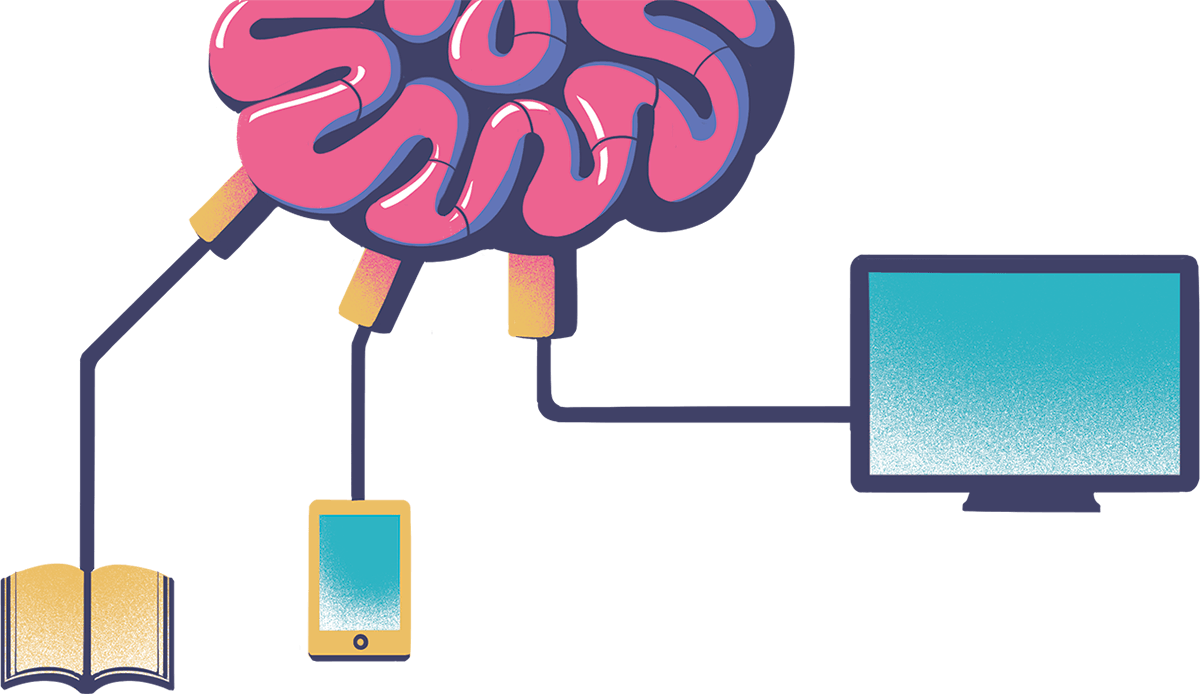
Future-proofing the next generation
How to inspire brains bombarded by tech-enabled stimulation.
Spring/Summer 2017 issue
Loosely defined as those born after 1995, Generation Z is the newest and most digitally linked generation to come of age. They are a group born from Generation X and Y parents who can’t remember life without cellphones or computers. They have no idea what a dot matrix printer is and completely missed the agony of installing Microsoft Office 97 using a stack of 45 floppy disks. The dreadful days of dial-up have been replaced by the near-instantaneous gratification of 4G networks, and information once scrolled on to paper, bound and housed within massive dusty collections is now, literally, at everyone’s fingertips.
A recent Tech 21 Century article suggested that in our current day and age, the human brain is inundated with around 35 gigabytes of digital data each day. To put things in perspective — based on the standard Internet connection of 56 kilobytes per second in the mid ‘90s, it would have taken 62 days, 3 hours and 29 minutes (if nobody needed the phone) to download the amount of material now being digested during waking hours.
For university professors, the constant stimulation has resulted in a new challenge in getting through to students despite the barrage of information streaming through their digital devices and available on LED screens everywhere. Yet, surprisingly enough, despite the new reality of the digital world, the breadcrumbs that lead to the most effective approaches to teaching remain remarkably, well — traditional.
Deep down, we all have the same kind of childlike intrigue, explains Todd Nickle, PhD and professor in the Faculty of Science who’s taught biology at Mount Royal for over 15 years.
“Everyone has the same core curiosity,” he says. “Just look at any kid with an ant colony and a stick.” Nickle uses a bowl of Jell-O to represent giant human cells in his Introductory Biology and Principles of Genetics classes, which suddenly becomes more interesting to students than BuzzFeed’s latest top 10. And, when dish soap and salt become the tools to extract the snot-like DNA from a strawberry, students tend to block out the pop-ups and tune in.
It’s finding that ant hill and giving the students a stick to poke it with that inspires an insatiable appetite for discovery, and it’s this hunger that drives Nickle to explore new and creative ways to reach his students despite the binary-borne noise. It’s tactile, hands-on experience that just can’t be gotten from a YouTube video tutorial.
“I like to play,” says Nickle. “And having fun with curricula gives me a chance to capture the students’ imagination and demonstrate the wonders of what it takes to make life work.”
As the conversation continuously circles around technology and its influence on how we learn, Jim Zimmer, PhD and associate vice-president of Teaching and Learning at Mount Royal, says being able to effectively reach this new generation of learners relies on the versatility, enthusiasm and ingenuity of professors.
“Creative and innovative professors like Nickle have managed to adapt and evolve their teaching practices to both challenge and excite the minds of our students,” says Zimmer.
Digital connectivity is redefining the classroom, says Professor Tim Taylor, who teaches students in Keyano College’s collaborative Bachelor of Science — Environmental Science program 750 km to the north via Mount Royal’s on-campus telepresence suite.
“It’s been a learning experience,” says Taylor, who grappled with a new set of teaching complications posed by digital delivery.
“It really got me thinking about how to get people to learn,” he says. “I practised things as simple as facial animation to keep the attention of students at the rear of the televised room. Beyond the little things like that, we really had to look at enhancing the course design and content to complement the delivery model for the benefit of student learners in both cities.”
On campus, Mount Royal’s Academic Development Centre (ADC) acts as an incubator for developing and integrating new teaching models into the classroom. And, although they encourage the exploration and implementation of new high-tech teaching tools, they aren’t necessarily suggesting that they are always the best suited for curricula.
“We are careful not to put technology ahead of learning,” says Amanda Veinotte, manager of learning technologies at the ADC. “Our task is to assist and support faculty to identify technological solutions that can complement and augment the teaching and learning experience in Mount Royal classrooms, not distract or detract from the experience.”
It’s metaphorically akin to the re-emergence of vinyl records offering true analogue sound in the era of digital downloads — despite being unportable and a comparatively user-intensive means of playing music.
Even with the apparent ease of digital interfaces, the time-tested and true human connection and collaboration approach remains the best way to advance student learning strategies and techniques, says Veinotte.
When professors are able to associate and create links between programs, interdisciplinary opportunities become more available to students, creating prospects for bonding with peers and gaining new perspectives.
“Most students arrive with the technical skills needed to survive in our digital world, but it’s at the University that they learn to dig deeper, discern all of this information and then question some of the ideas,” says Zimmer.
While technology has forced the evolution of the educational approach in both the physical and academic realms, it is the face-to-face interactions that continue to inspire new, tailored learning outcomes for the next generations.
With the inevitable progression of the technological world, teachers are learning and learners are teaching in a perpetual cycle that drives the balanced approach Mount Royal takes to ready students to be leaders in the workforce and in the community.
Read more Summit
A leaner, cleaner, greener campus
Environmental efforts streamline processes
READ MORE

